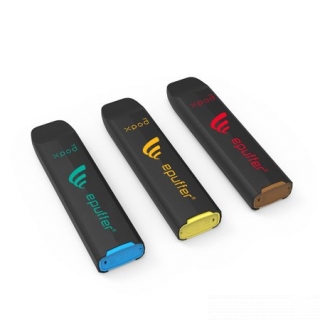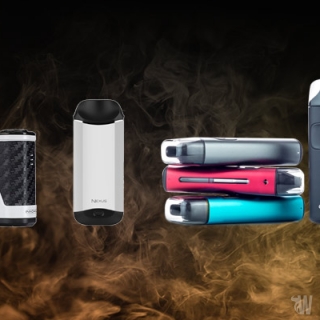How many e-cig watts are enough?

You are probably aware by now that the electronic cigarette industry is constantly shifting, and new trends are appealing to more and more customers that leave their old devices behind and start buying the latest that technology has to offer. One of these trends is the increasing number of watts an advanced personal vaporizer can deliver these days.
The first electronic cigarette models, the three piece or two piece “cig-a-like†devices had a rechargeable battery inside that couldn’t be replaced and vapers had to constantly recharge their device that offered very few vaping hours. Then, with the eGo style devices started a small revolution with the introduction of variable voltage batteries. They managed to offer a far superior vaping experience, because the user could adjust the output voltage (between two relatively small intervals) and find a personal sweet spot no matter what the type of e-liquid or nicotine concentration.
Then it was the turn of advanced personal vaporizers, which took things to a completely different level. Benefiting from microchips and circuit boards, they could offer both variable voltage and variable wattage. Variable wattage, even though still argued by some people, offers an even more impressive control over the entire vaping experience. The first devices weren’t that powerful but still managed to go as high as 11-12 or even 15 Watts. They started a revolution inside the vaping community and started selling millions of units worldwide.
Seeing this thirst for powerful devices, the manufacturers started to invest more and more money into the research and development of their vaporizers and managed to release more and more battery thirsty AVPs on the market. And when we say battery thirsty, we mean it. As you probably know there’s a very close connection between the power output of the device, its resistance and the continuous discharge rate of the battery. As a vaporizer pumps out the wattage, it also needs a battery capable of supplying it’s continuous demand for energy and this is why, side by side with the AVPs, there has been a new line of batteries released that can handle tremendous power. But things can only go so far at a given point in time, on the technological breakthrough chart.
Vaporizers went quickly to 20W, then 22W, and then 30W. The DNA 30 is probably one of the most successful devices in the battle with the watts and it represented the pinnacle of stability with respect to the power it delivers.
Besides many safety features, the DNA 30 powered by the Evolv chip had a temperature sensor that warned the user to pause puffing on the device for a short period in order for the mod to cool off. With its 30 watts of power, it allowed many users to experiment cloud chasing and everyone was absolutely thrilled.
However, the competition was busy at work and wanted a slice of the watt-starving consumer, and soon delivered devices operating at 50Watts. The Cloupor T5 and the Pioneer4you IPV V2.0 are just two of the advanced personal vaporizers that quickly became out of stock only days after hitting the market. They offered a far superior vaping power when compared to the DNA 30(bigger clouds, superior flavor and throat hit), and it was already certain that things wouldn’t stop there.
Brands like Sigelei and Cloupor managed to push the technology even further and released this fall devices with even more power. The Cloupor T6 and the Sigelei 100 needed a lot of energy to operate, so these vaporizers made use of two powerful batteries simultaneously. However, there’s a catch: you can’t get the full power only if you use sub-ohm resistance atomizers. With a normal atty (1.2 – 1.8 Ohms) you’ll only be able to reach the 100Watt margin. For instance, with the Sigelei, you will only get to 100 if you are using a built anywhere between 0.15 and 0.60 Watts because of the 8.1-volt limit on the battery.
Of course, things did not pause on the 100-Watt limit, because two companies Pioneer4you and Cloupor released their latest devices to consumers and they are able to operate at a whopping 150 Watts. Both the Cloupor T8 and the IPV V3 are operated by two 18650 batteries that need to be 30A each. And again, we have the problem with the voltage limitation of 7V, that allows you to use the whole 150W only on atomizer builds of anywhere between 0.1 and 0.33Ohms. Anything above that will gradually decrease the power to match the chip limitation (we bet you’re already familiar with Ohm’s Law and won’t go into detail on how it works) and render the immense power useless.
Therefore, you are spending a lot of money on a 50-100-150 Watt device, but you are only able to get this power between certain sub-ohm limits. Regular atomizer builds, or tank systems operating above the 1-Ohm limit will operate the same way as on less powerful devices like the DNA 30, the Sigelei 7-30 or the 7-22.
However, besides the voltage limitations of these chips there’s considerable problem with heat. If you ever puffed on an IPV V2 or Cloupor T5 you already know that at sub-ohm resistances the vapor comes out very hot. For someone used to cool vapes, this is not a nice feeling and it can make the whole experience unpleasant. It can affect both the flavor and throat hit and you will soon find yourself vaping between the 20-30Watt interval.
But the immense power also generates a lot of heat. Both of these devices come with heat sensors to cut off vaping once the chip has reached a certain limit but safety should be crucial when dealing with these sorts of voltages and with gizmos that you use so close to your face.
This is even more concerning when it involves mass-produced China-made chips, and one UK company (LIBERTYFLIGHTS.CO.UK) decided to recall the IPV V3 devices they sold in an effort to keep their customers out of harm’s way. On November 4, a unit was returned to the seller because it presented some unusual melting plastic on the battery casing. Since the fault matched one of the staff member’s IPV 3’s and the Chinese manufacturer didn’t answer because tech support was unavailable at the time, the company decided not to take any risks and recalled all the products sold via email and phone.
This comes to show how powerful the devices are and how the manufacturers are now walking on the edge of the cliff, in their effort to produce a best-seller. We have already been informed about numerous cases of less powerful ecigs that have exploded on unsuspecting vapers due to various battery or charging related issues, and considering that these new gizmos pack not one but two extremely potent batteries an explosion might prove fatal.
Sure, as opposed to mechanical mods, advanced personal vaporizers pack a lot of safety features but it seems that these alone cannot cover the wide variety of risks involved when puffing on the limit of both the batteries and the microchips.
Vapers out there are constantly trying to improve their experience with rebuildable dripping atomizers that allow them to design sub-ohm coils and the “cloud chasing†trend has become increasingly popular this year but everything has a limit. We’re not trying to discourage the breakthroughs in technology that are paving the road for such powerful devices, we’re just saying that everything is happening way to fast. These vaporizers need thorough testing and in field experimenting before concluding on their safety and appropriate manners of use.
So many times that we have tested of highlighted a moderately powered devices we were assaulted by comments stating that there are way more powerful devices out there and we shouldn’t bring into discussion these non-cloud chasing gizmos. However, we are not addressing solely to the cloud chasing community. Everything we do is because we believe in the power of e-puffing to further help smokers cut down and eventually kick the habit in order to live a healthier and more enjoyable life.
What you vaping enthusiasts need to understand is that not everyone is looking to blow out clouds that fill the whole room with the delicious mist in a few seconds. The majority of vapers are only looking for something that will deliver the same nicotine amount as a regular e-cigarette and make the whole transition process more enjoyable.
Very few people buy a 50-Watt device and use it only with 0.5-Ohm builds to benefit from the full power. Most of them will gradually leave the cloud chasing part behind and delight themselves with a reasonable but delicious experience around the 20W margin. Once they find a sweet spot and a good quality e-liquid, they will be vaping on the same configuration for days, weeks or probably months.
This is the main reason behind the fact that we are constantly trying to review a broad category of vaporizers from mechanical mods to the latest releases on the market. So many people find their comfort in devices like the Innokin MVP, the Seven 22, the Smoktech Magneto or the iTaste VTR. Also, many vapers prefer much simpler tank systems like the Aspire or the Kanger because they give off good clouds of vapor without having to constantly build coils with the whole desk being full of cotton, screwdrivers or pliers. They simply replace the atomizer heads once every 10 or 20 days and they are ready to puff once again.
Power isn’t always the sole benefit of satisfaction. You don’t need 150 Watts for a day-to-day vape that keeps you happy and away from those nasty tobacco combustible. You need a device that’s dependable, easy to use and a pleasure to puff on. You can only imagine that still a wide majority of e-smokers is currently using two-piece starter kits with replaceable cartomizers and they are more than happy with the amount of vapor or flavor.
Technology is good, but when used with moderation and a lot of safety concerns. You will never hear anyone complain about his or her DNA 30 / Hanna, but once the watts are taken above a certain limit, the problems start to appear. We are not saying that the powerful mods are not a good purchase – they have amazed us with the amount of vapor, flavor and throat hit – we are just saying they are not for everyone and certainly there will be still a lot of best sellers that don’t exaggerate on the amount of watts.










